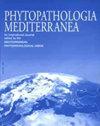Recent research accomplishments on early detection of Xylella fastidiosa outbreaks in the Mediterranean Basin
IF 1.9
3区 农林科学
Q2 AGRONOMY
引用次数: 1
Abstract
Xylella fastidiosa is a major transboundary plant pest, causing severe socioeconomic impacts. Development of preventive strategies and methods for surveillance, early detection, monitoring, and accurate diagnosis of X. fastidiosa and its vectors, are keys to preventing the effects of this plant pathogen, and assist timely eradication or optimisation of containment measures. This review focuses on approaches for early detection of X. fastidiosa in the Mediterranean Basin, including development of climatic suitability risk maps to determine areas of potential establishment, and epidemiological models to assist in outbreak management through optimized surveillance and targeted responses. The usefulness of airborne hyperspectral and thermal images from remote sensing to discriminate X. fastidiosa infections from other biotic- and abiotic-induced spectral signatures is also discussed. The most commonly used methods for identifying X. fastidiosa in infected plants and vectors, and the molecular approaches available to genetically characterize X. fastidiosa strains, are described. Each of these approaches has trade-offs, but stepwise or simultaneous combinations of these methods may help to contain X. fastidiosa epidemics in the Mediterranean Basin.地中海盆地早期发现苛养木杆菌疫情的最新研究成果
苛养木杆菌是一种主要的跨界植物有害生物,造成严重的社会经济影响。制定监测、早期发现、监测和准确诊断苛养螺旋体及其病媒的预防战略和方法,是预防这种植物病原体影响的关键,并有助于及时根除或优化控制措施。本综述侧重于地中海盆地早期发现苛养x虫的方法,包括制定气候适宜性风险图以确定可能发生的地区,以及流行病学模型以通过优化监测和有针对性的应对来协助疫情管理。本文还讨论了航空高光谱图像和遥感热图像对区分苛养双歧杆菌感染与其他生物和非生物诱导的光谱特征的有用性。描述了在受感染的植物和媒介中鉴定苛养双歧杆菌最常用的方法,以及可用于遗传表征苛养双歧杆菌菌株的分子方法。这些方法各有利弊,但逐步或同时结合使用这些方法可能有助于控制地中海盆地的苛养螺旋体流行。
本文章由计算机程序翻译,如有差异,请以英文原文为准。
求助全文
约1分钟内获得全文
求助全文
来源期刊

Phytopathologia Mediterranea
生物-植物科学
CiteScore
4.40
自引率
8.30%
发文量
28
审稿时长
6-12 weeks
期刊介绍:
Phytopathologia Mediterranea is an international journal edited by the Mediterranean Phytopathological Union. The journal’s mission is the promotion of plant health for Mediterranean crops, climate and regions, safe food production, and the transfer of new knowledge on plant diseases and their sustainable management.
The journal deals with all areas of plant pathology, including etiology, epidemiology, disease control, biochemical and physiological aspects, and utilization of molecular technologies. All types of plant pathogens are covered, including fungi, oomycetes, nematodes, protozoa, bacteria, phytoplasmas, viruses, and viroids. The journal also gives a special attention to research on mycotoxins, biological and integrated management of plant diseases, and the use of natural substances in disease and weed control. The journal focuses on pathology of Mediterranean crops grown throughout the world.
The Editorial Board of Phytopathologia Mediterranea has recently been reorganised, under two Editors-in-Chief and with an increased number of editors.
 求助内容:
求助内容: 应助结果提醒方式:
应助结果提醒方式:


